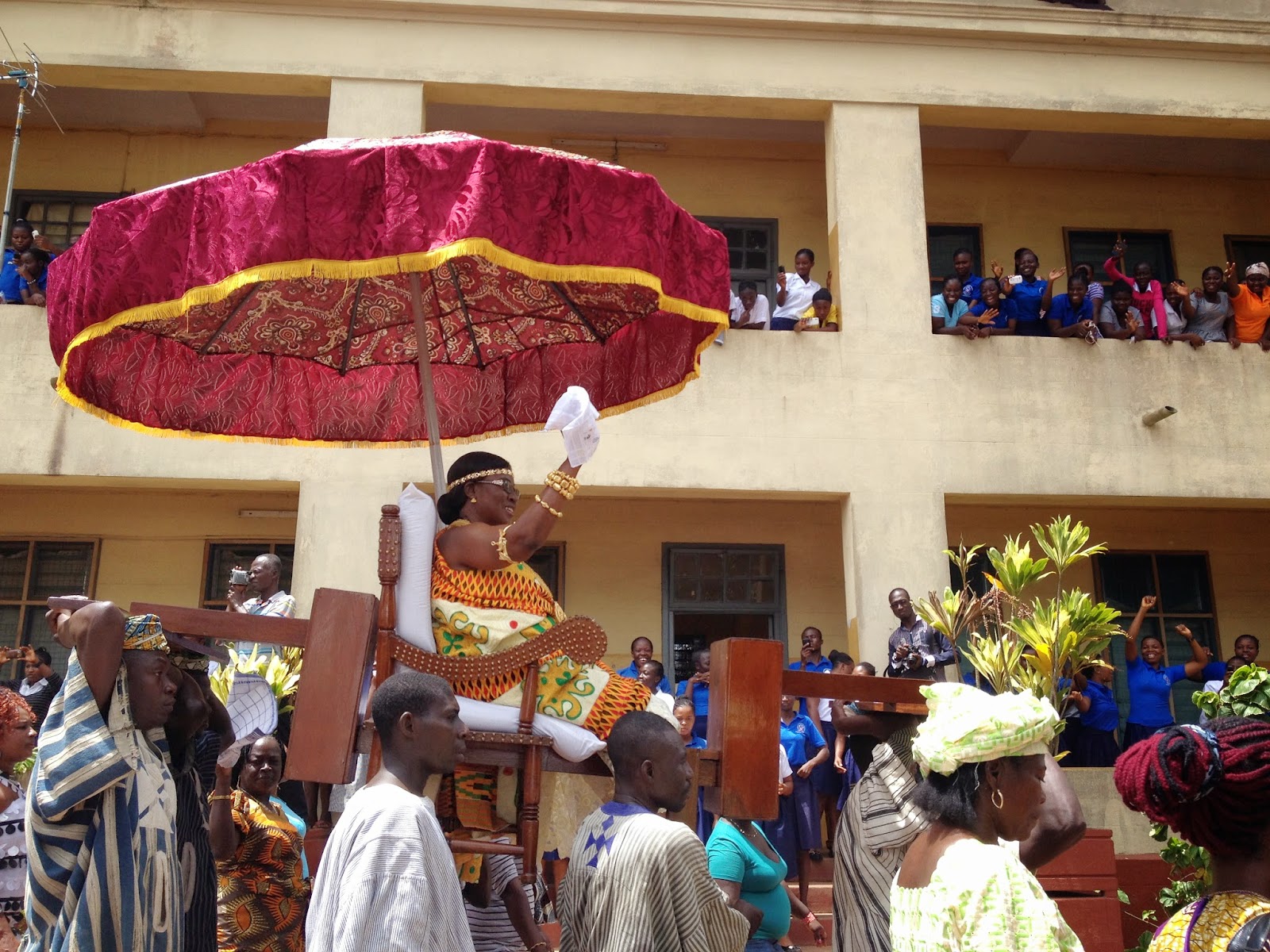As we are finishing our time here, I thought I would give a short tour of University of Ghana, Legon Campus as I know it. From the student hostel I live in to the Institute of African Studies where we have held most of our classes is about a 20 minute walk passing a market, other hostels, and classroom buildings.
This is a panoramic view from my fourth floor room porch. The room overlooks a minimally used car park and road, but in the distance are some unfinished buildings and the unfinished university stadium.
This is the courtyard for my hostel building. In the center there is a fountain that still has not been seen working since the day we arrived here. There is a bust of Professor Hilla Limann whom our hostel is named after. To the left, there are areas to hang clothes as well as two net-less tennis courts. On the right, there is a basketball court as well as areas to hang clothes out to dry.
When I leave the hostel each day, I walk towards the International Students Hostel (ISH) and Jubilee Hall. Above you can see the first ISH building and below left is the entrance to Jubilee Hall. Below right is the other ISH building.
We also walk by our main sources for food and snacks. Most of the time we go to the Night Market (it is open both during the day and at night) which is pictured above. There are many items sold here, from pillows and phone minutes, to fresh fruits and vegetables, to jollof rice and plantain. Plus my most frequent purchase- egg sandwiches with a dessert of fresh mangoes or oranges. Below is the All Needs Supermarket where we can get many packaged goods, chocolate, and Blue Skies fruit juice.
The intersection after the night market and crossing over to the next block of university hostels. The blue structure was a bus stop, but it has now been removed and replaced by a patch of brick sidewalk for trotros and taxis to pick people up there.
There are huge, old trees scattered across campus, but this section of our walk on a tree-lined road is the shadiest and breeziest. It is the avenue lining the hostels and leading to the lecture halls. Below is the last hostel on this road and it is a place that we often go to eat lunch as there is a cheap cafeteria there.
The final stretch! Throughout our entire walk we need to avoid tripping into or over the gutters that line the road. The boulevard on campus features our final destination- The Kwame Nkrumah Complex Institute of African Studies (pictured below). This was always a good sight after a long (but good), sweaty walk from our hostel. We were always grateful for the running water, air conditioning, wifi, and of course good learning that this building represents!
Recently, I received the final installment of our Off-Campus Studies Newsletter from our ever-encouraging Calvin Off-Campus Studies Office back in Michigan. The newsletter started with this quote from Donald Miller: "It occurs to me, as it sometimes does, that this day is over and will never be lived again, that we are only the sum of days, and when those are spent, we will not come back to this place,to this time, to these people and these colors, and I wonder whether to be sad about this or to be happy, to trust that these moments were meant for some kind of enjoyment, as a kind of blessing." Good thoughts to ponder in all our endeavors of life and through the transitions we will experience as citizens of this vast world.





















































